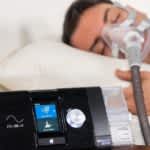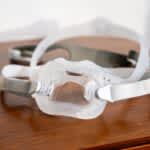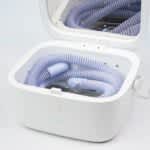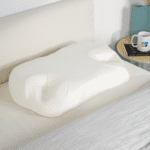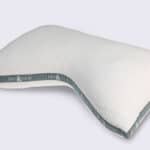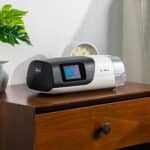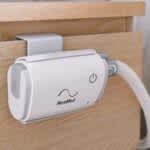Adjustable beds typically start at $500 in smaller sizes and can easily cross the $2,000 threshold for split designs, making them a significant financial investment for most buyers. Using Medicare or Medicaid can lower your out-of-pocket payments. That said, there are a few stipulations with both of these programs to consider.
Medicare Coverage of Adjustable Beds
Medicare does not cover standard adjustable beds. Under certain conditions, you can use Medicare Part B to cover the cost of a hospital-grade adjustable bed because these models are categorized as durable medical equipment (DME). These conditions include the following:
- Your primary care provider (PCP) must prescribe a hospital-grade adjustable bed for in-home use.
- You and your PCP must both be enrolled in Medicare to qualify for a payout.
- If approved, Medicare covers 80% of the adjustable bed’s cost. You are responsible for the remaining 20%.
- DME suppliers who are enrolled in Medicare can only charge you for the coinsurance and deductible based on the amount Medicare approves. If the supplier is not Medicare-enrolled, there are no restrictions on how much they can charge you.
Keep in mind that hospital-grade adjustable beds are not comparable to standard adjustable beds in terms of amenities or performance. Many of these bases aren’t equipped for massage, automatic snore response, wall-hugging, and other features commonly found in standard adjustable beds. Hospital-grade beds may also be somewhat loud and slow to transition between positions.
Medicaid Coverage for Adjustable Beds
Unlike Medicare, a federal program available to all people 65 and older, Medicaid is a joint federal and state-level program for people with qualifying income needs. If you meet the criteria in your state, you may use Medicaid to partially pay for a hospital-grade adjustable bed. Medicaid cannot cover the cost of standard, non-prescription adjustable beds.
Your PCP and DME supplier must both be enrolled in Medicaid in order for you to receive funding for your hospital-grade adjustable bed. Otherwise, you won’t be able to secure coverage for your purchase and will need to pay out of pocket.
At the state level, you can obtain a waiver that covers some or all of your adjustable bed’s total cost. However, some states offer more robust waiver programs than others. The table below includes some state-by-state waiver options, but the list is not exhaustive and other options may be available in your state of residence. Click each state name to see all waiver programs currently listed on the Medicaid.gov website.
We cannot guarantee these waiver programs will be able to assist you with your adjustable bed purchase. Age requirements for each waiver are listed below, but additional restrictions and conditions may apply.
Veterans Assistance for Adjustable Beds
If Medicaid isn’t feasible and you are a military veteran, an alternative payment option may be available through the U.S. Department of Veterans Affairs (VA). Certain people purchasing hospital-grade adjustable beds and other DME may qualify for partial coverage through the VA, but — as with Medicare and Medicaid — certain stipulations apply.
Adjustable Bed Frequently Asked Questions
Medicare only covers the cost of your adjustable bed under certain conditions. Your primary care provider must prescribe you an adjustable bed for in-home use, you’ll be limited to hospital-grade models, and both you and your doctor must be enrolled in Medicare. If you meet these criteria, Medicare covers 80% of the cost.
You need a doctor’s prescription to purchase an adjustable bed if you’re planning for Medicare or Medicaid to cover part of the cost. If you plan to pay full price for the bed, no prescription is necessary.
Most adjustable beds are designed to be compatible with any mattress on the market. However, we’ve found foam, latex, and hybrid mattresses work best. Traditional innersprings are fairly rigid and don’t conform very closely, so you may not fully enjoy the pressure-relieving benefits of sleeping with your upper or lower body elevated. Additionally, mattresses with custom sizes will need an adjustable bed with matching dimensions and won’t be compatible with standard bases.
Standard sheets may work well with an adjustable bed, but some people find their flat sheet comes loose — even if it’s tucked beneath the mattress. If you run into this issue, a flat sheet with corner straps may be the solution.
Most adjustable beds cost between $1,000 and $3,000. Size is an important consideration, with split designs often priced much higher than standard sizes. Adjustable beds with special features such as massage, wall-hugging technology, and sleep tracking also tend to be more expensive than models with fewer bells and whistles.
Adjustable beds are technically compatible with any sleep position, but side and back sleepers tend to feel most comfortable with their upper and lower body in raised positions. Stomach sleepers may enjoy adjusting the angle of their sleep surface to a slight degree, but zero gravity and other positions with the legs elevated may be uncomfortable and cause lower back strain.
You may enjoy an adjustable bed if you have limited mobility or chronic pain. Certain features also have appeal for a wider audience. For example, if you read in bed, you may appreciate the ability to raise the head of the bed, while massage and zero-gravity functions may be useful if you frequently exercise or have a physical job.
The expected lifespan of an adjustable base is approximately 10 years, though this can vary depending on the amount of use, the design, and the quality of the materials. Most mattresses last 7 to 10 years, although your mattress may wear out more quickly if it’s used nightly on an adjustable base.


